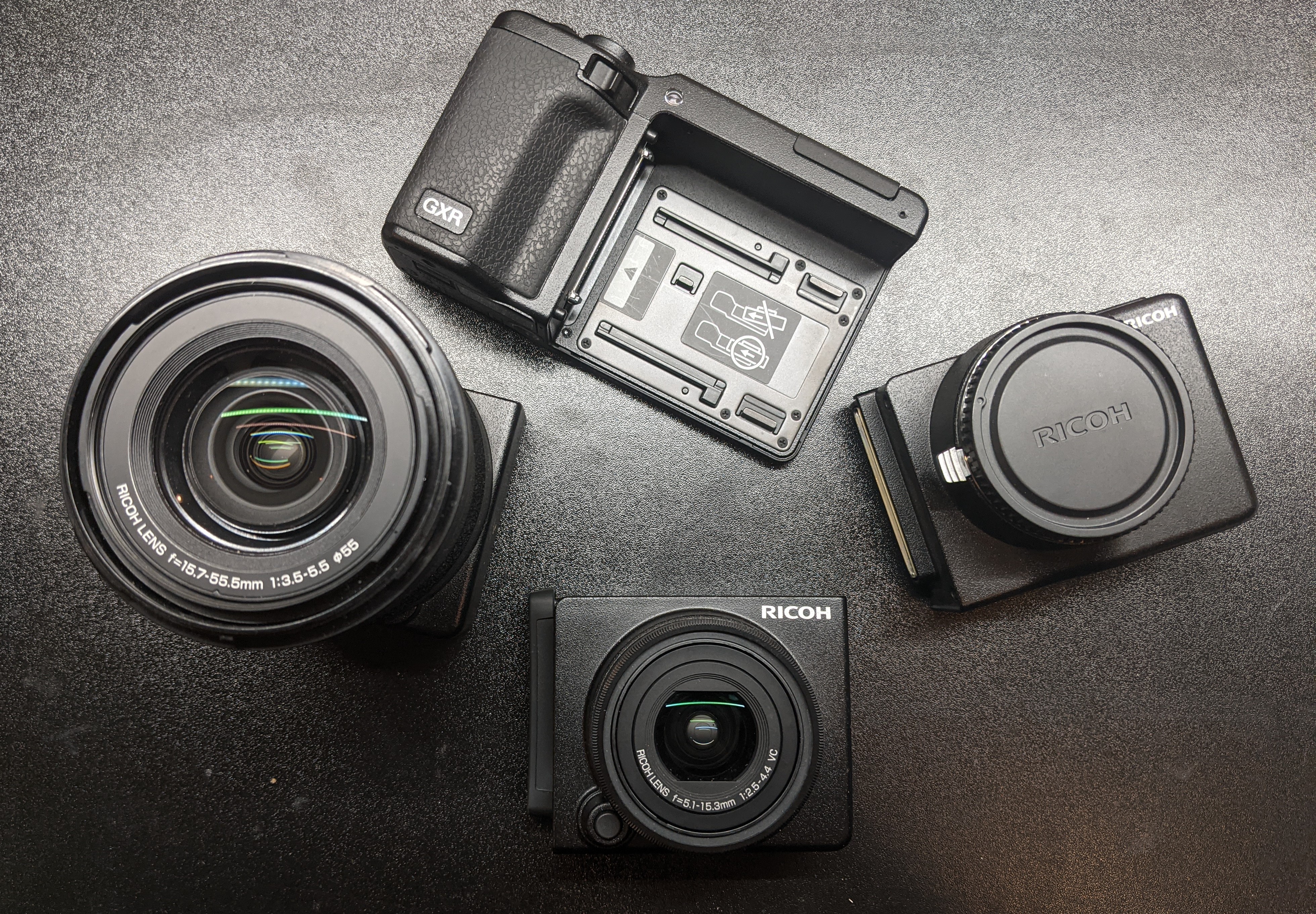
After a close-call with the post service black hole, my Ricoh GXR finally arrived safely into my hands the other day. I haven’t had much time to play with it, but here are my initial thoughts and impressions about this unique camera. Or is it a camera system?
Introduction
There are three main reasons I knew I had to try the Ricoh GXR one day. First is my love for my 2013 Ricoh GR. From the get go using that camera I knew it was going to be a keeper, and over a year later it’s still going strong with no signs of selling it. I wasn’t convinced before that Ricoh made cameras any more special than the next, and now I am. So, I wanted to delve deeper into some of the other cameras in the series.
Second, the camera system is like no other. I haven’t heard of any other camera system that took the approach Ricoh did here. The camera you hold onto is nothing more than a screen with buttons, a flash, a spot for a battery and SD cards. It’s incredibly light without a module attached. The modules house the sensor, lens and processor. By swapping the module, you are not using a new lens on the same sensor and processor, but a completely different “camera.” I mean that. Across the modules you have three different sensor sizes, CCD and CMOS sensor types, and different processor specs. And then of course the lenses. You are maintaining the same grip, buttons, and menu system of your camera but otherwise getting quite a different camera experience.
My third reason for wanting to try out this camera was specifically for the Leica M module. This APS-C module is the only one that accepts interchangeable lenses, and with that you have a Ricoh mirrorless camera that you can mount all sorts of vintage lenses too. If that doesn’t sound fun, I don’t know what does. You must not love having fun very much.
My Modules
Ricoh released a total of six modules for the GXR before the system died. These ranged from small sensor super zooms, to normal zooms, to fast APS-C primes and finally, the only interchangeable lens mount module, the Leica M module.
The three I bought to start with are the S10, the A12 Leica mount and the A16.
S10 24-72mm f2.5-4.4
The S10 is a normal zoom with a 10 megapixel 1/1.7” CCD sensor. It’s not particularly fast, and the sensor size isn’t particularly large. But it is the most compact module making the Ricoh GXR just a tad larger than my 2013 Ricoh GR and still very much pocketable. In recent years, and for whatever reason, the S10 will pop up as an infrared converted module almost more times than it’s not. I don’t know if it’s just a particularly easy sensor to modify, or if the idea that you could have one camera that can have an infrared module and a normal module is appealing to some. In any case, mine is infrared converted and I look forward to shooting with it.
A12 Leica M module
The A12 Leica M module is the most unique in that it is the only module that allows attaching other lenses. It uses what appears to be the same 12.3 megapixel CMOS APS-C sensor from the other two A12 modules, the 50mm f2.8 macro and the 28mm f2.5.
The history behind why the Leica M mount was chosen is unknown to me and will require additional research, but I have some guesses. One would be that Ricoh and even Pentax had some work with Leica before, and certainly respected their work. The second is more practical – in 2009 when this camera was released there was no an abundance of mirrorless mounts like there are today, and certainly not apparent which ones would live and which would not. If the GXR were being developed today it would have many more options to choose from, and who knows, maybe would even include a micro 4/3 mount.
I bought a Leica-M to Pentax-K adapter for the module and plan to use it this way mostly. If you have any insights into affordable Leica M mount glass then let me know. I would be willing to try some out that way.
A16 24-85mm f3.5-5.5
This APS-C module has a different sensor and processor from the A12 modules. It is a 16 megapixel CMOS sensor with a newer processing engine. The lens itself is a normal zoom range. Remember the numbers listed on the modules are for the equivalent 35mm format focal range, so the lens itself is actually a 15.7-55.5mm lens on APS-C sized sensor. This makes the 24-85mm a perfectly acceptable range to cover a lot of scenarios. It’s not very fast, but very sharp, and can achieve nice bokeh when zoomed in on a close subject.
It does strike me as an odd module. It’s the highest megapixel of the series and the newest processor. But it’s also by far the largest, and not a very standout lens on a spec sheet. But if you were invested in the system and wanted a normal zoom in APS-C, then I suppose this was there answer to that.
Using the Camera
So far (in my very short experience) the Ricoh GXR is a treat to use. If you are familiar with any Ricoh GR series cameras, even the newer ones, the menu system and button layout will feel right at home. It’s a system that makes a lot of sense to me. The body is comfortable in the hands, but starts to feel small once you use a larger module or when I mounted heavy lenses to the Leica M module.
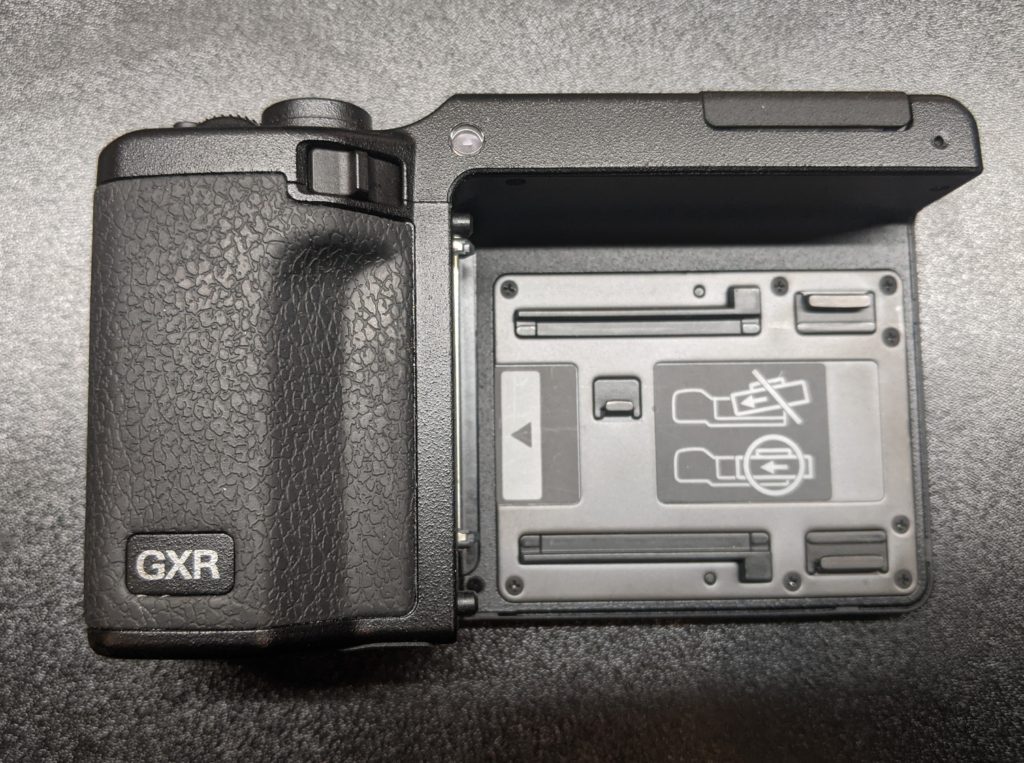
Sliding the modules on and off feels great! It feels just like taking on and off a lens, just not rotational. There’s a quick release level on the camera that is a switch instead of a button. Once you depress and hold that you can slide the unit off. Sliding a new one in is easy to line up and you get a satisfying click signifying that your module is attached securely. It feels very strong and not at all gimmicky.
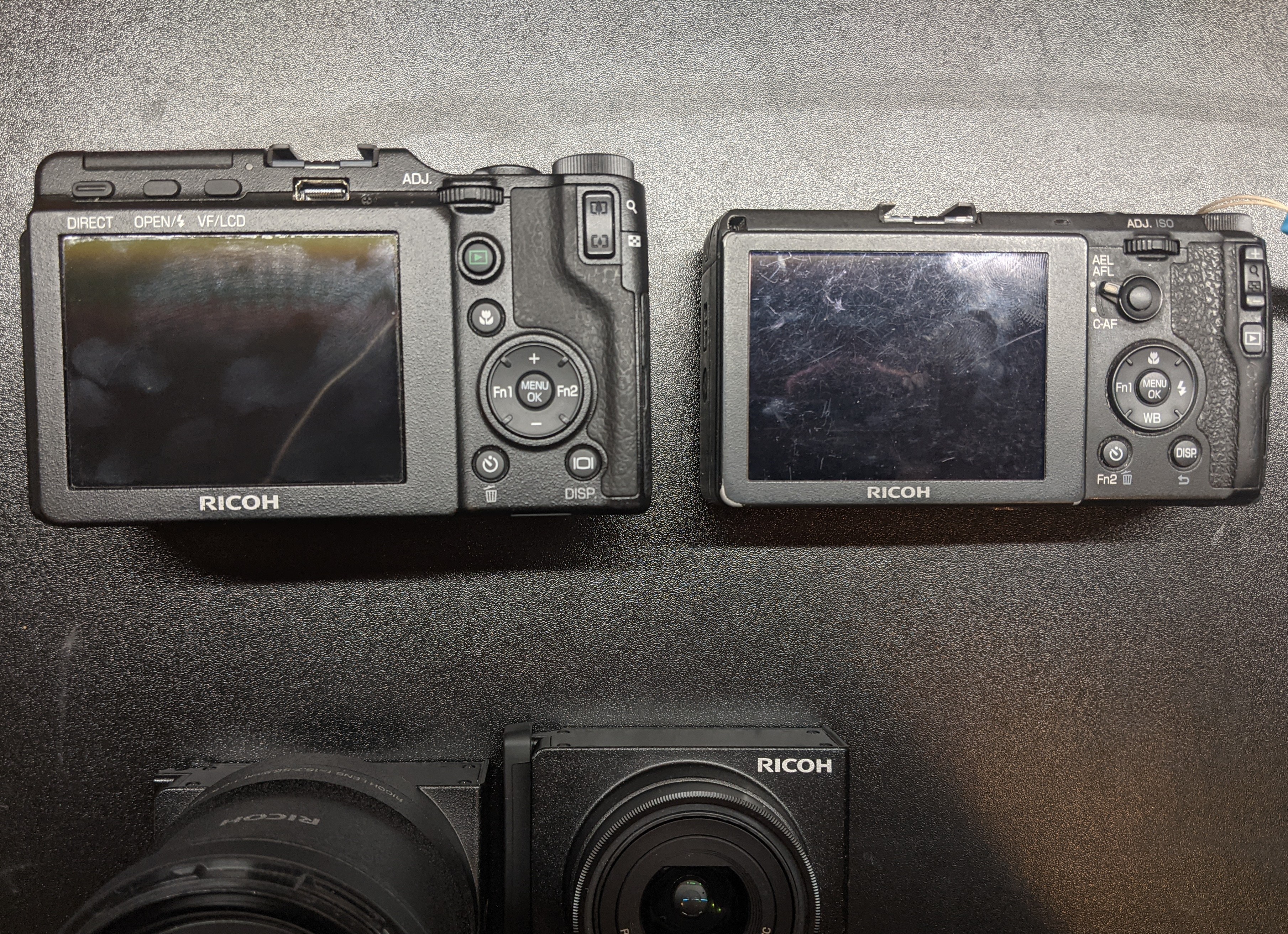
The Ricoh GXR is just a tad larger in all dimensions than my Ricoh GR (2013). When used with a smaller module it is perfectly pocketable, if maybe a larger pocket than the smaller GRs. The larger modules turn it into a compact mirrorless camera that you would need a small bag for.
Now to shoot it
That’s it for my introduction to the Ricoh GXR. I’m off to shoot it for the next few months and see what I think before reporting back. Let me know if you have any questions or suggestions for what to mount to my Leica M mount module.
If you are looking to pick up a Ricoh GXR, don’t forget to go through my new eBay affiliate link! It won’t cost you a penny more, and you’ll be supporting this site and my efforts. Thank you.

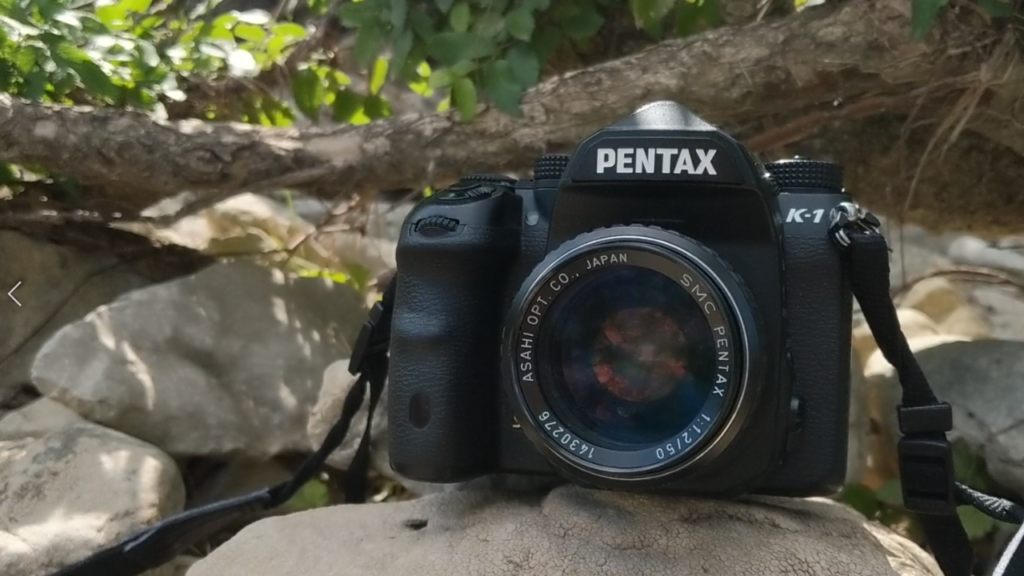
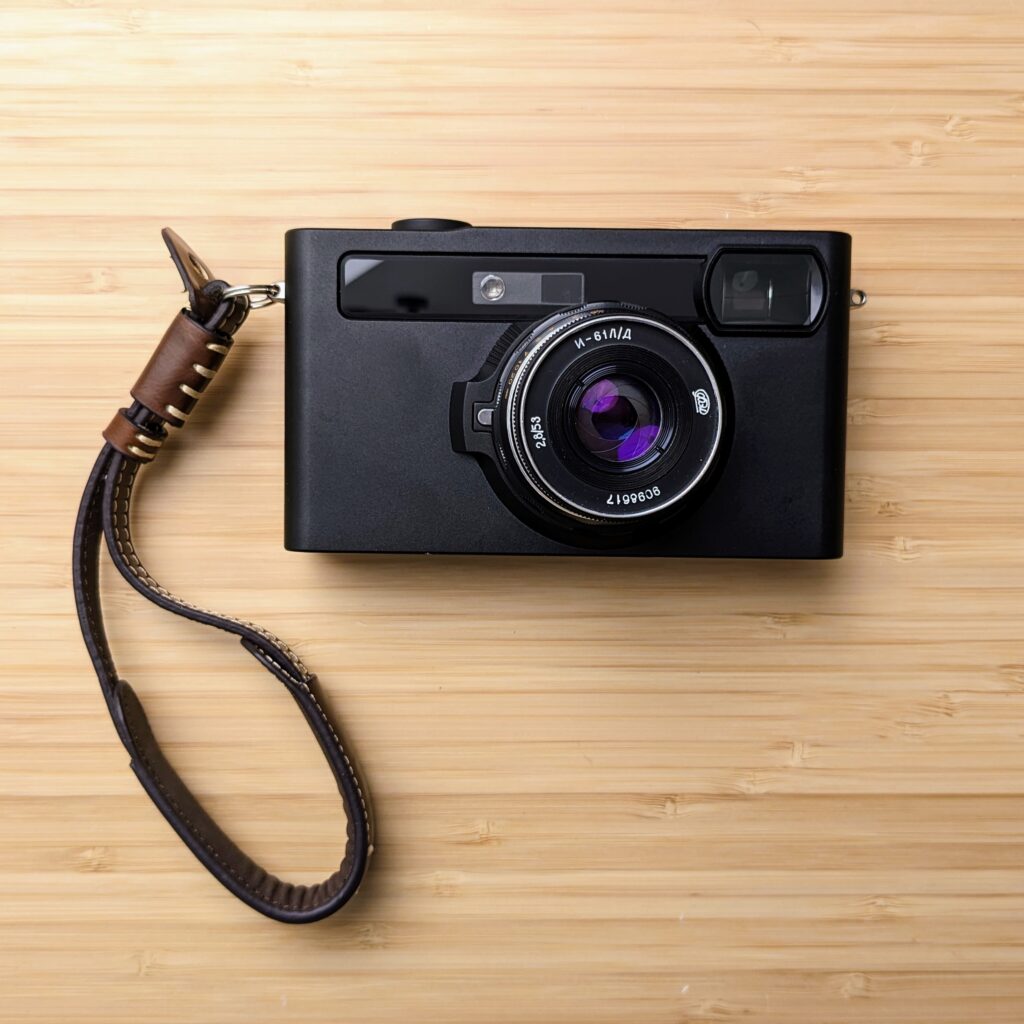
I love the concept of the GXR and I have been keeping my eyes open for one. I am looking forward to hearing about your adventures with it.
I just received my GXR, new believe it or not with the M mount, 28mm f2.5, standard zoom and 28-300mm modules. Feels great in the hand and looking forward to trying it out soon.
Great! That’s a nice set of modules. Do you have any lenses you plan on mounting on the M mount? I’m still looking out for native M lenses to try that aren’t too pricey.